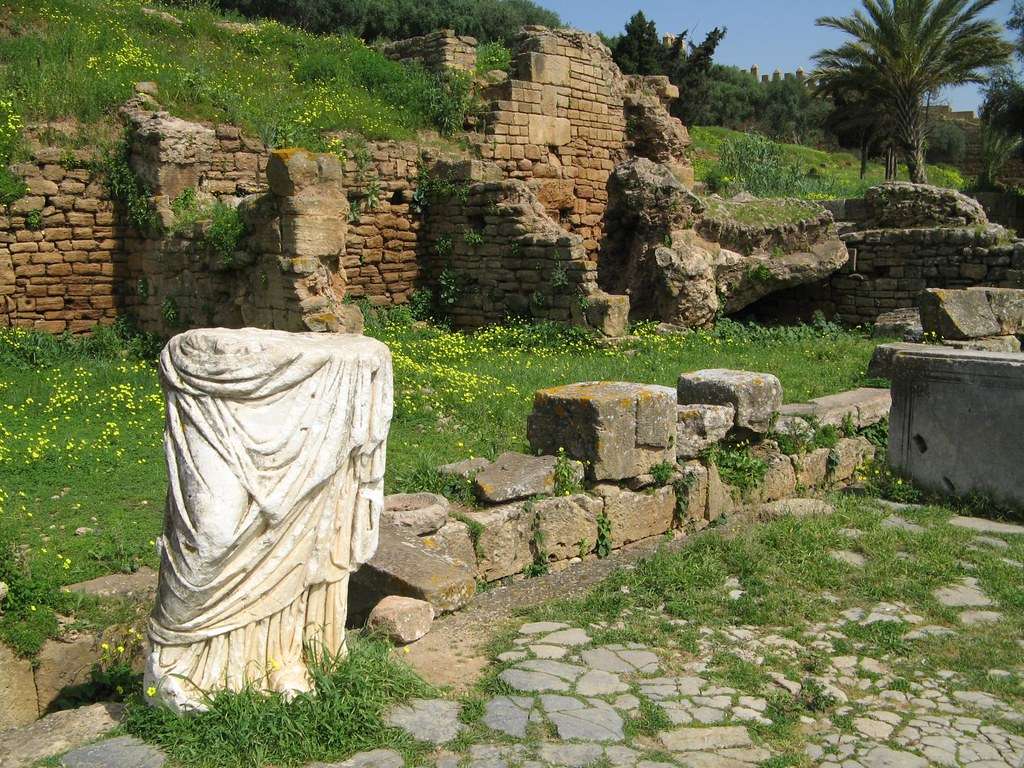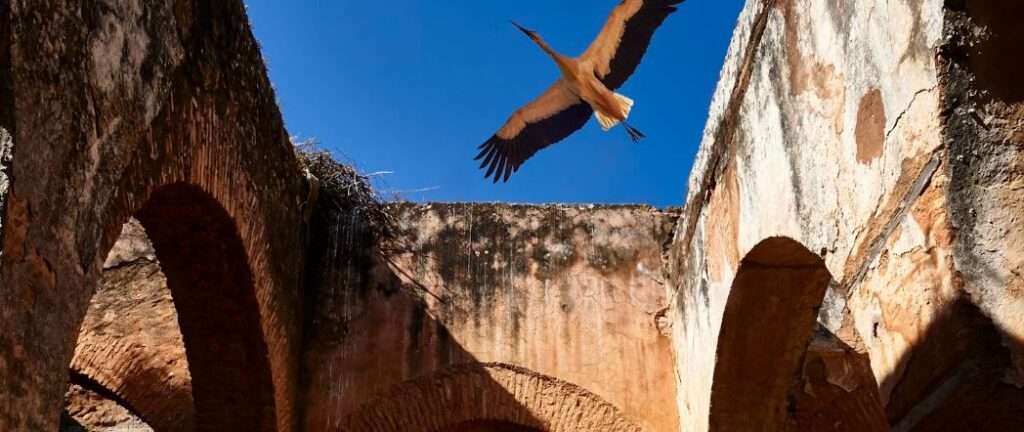It’s fascinating how timeworn places can often feel more alive than those newly built. Their worn-down walls, weathered stones, and faint whispers of the past stir our imaginations in ways that polished surfaces simply can’t. One such place is the Chellah Necropolis in Rabat, Morocco—a site that beckons visitors to journey through layers of ancient civilizations.
This isn’t just another historical site. It’s where Phoenicians, Romans, Arabs, and others left their marks, and the stories of their lives continue to echo in the ruins. As you walk through Chellah’s grounds, you may find that every corner is steeped in history, waiting to be rediscovered.
Table of Contents
| Sr# | Headings |
|---|---|
| 1 | Introduction |
| 2 | The Origins of the Chellah Necropolis |
| 3 | Phoenician and Roman Influence |
| 4 | The Arab Period and its Transformations |
| 5 | The Marinid Dynasty’s Contributions |
| 6 | Damage and Restoration Over the Centuries |
| 7 | Modern Chellah: Jazz Festivals and Beyond |
| 8 | Architectural Marvels to Explore |
| 9 | The Role of Nature in Chellah’s Mystique |
| 10 | Visiting Tips for Travelers |
| 11 | Fascinating Myths and Legends |
| 12 | Frequently Asked Questions |
| 13 | Conclusion: Chellah, a Timeless Journey |
The Origins of the Chellah Necropolis
The Chellah Necropolis, now a tranquil ruin, was once a bustling settlement. Its story begins in the Phoenician era, around the 3rd century BCE, when it was a strategic trade hub at the mouth of the Bou Regreg River. The Romans then expanded this port into a thriving city known as Sala Colonia, complete with forums, baths, and public buildings.

Phoenician and Roman Influence
Though largely eroded, remnants of the Roman period are still visible today, including sections of the ancient triumphal arch and the Roman baths. Walking among these ruins, it’s easy to imagine the lively exchanges that took place in the forum, where merchants traded goods and citizens debated public affairs. These Roman relics offer a window into a once-vibrant community that thrived under Roman rule.

The Arab Period and its Transformations
The city of Sala Colonia eventually fell into decline and was abandoned, only to be revived centuries later by the Arabs. They transformed it into a religious and educational hub by building a mosque, madrasa (Islamic school), and a mausoleum. These structures, especially the mosque of Abu Yusuf, brought new life to the ruins and established the necropolis as a sacred place.

The Marinid Dynasty’s Contributions
One of the most significant chapters in Chellah’s history came during the Marinid dynasty in the 14th century. They fortified the site, constructing the towering walls and ornate gates that still stand today. The mausoleum of Sultan Abdu al Hassan is a prominent feature of this period, as well as several smaller shrines and tombstones that honor those who lived in Rabat.

Damage and Restoration Over the Centuries
Despite its historical importance, Chellah suffered greatly over the centuries. The Great Lisbon Earthquake of 1755 severely damaged the necropolis, toppling many of its ancient structures. Years of neglect left Chellah in ruins until it was partially restored during the French Protectorate era in the 20th century. Restoration efforts brought Chellah back to life, allowing modern visitors to appreciate its historical significance.

Modern Chellah: Jazz Festivals and Beyond
Chellah isn’t just a relic of the past; it plays a role in modern Rabat as well. Since the 21st century, the necropolis has hosted the annual Jazz au Chellah Festival, where musicians from around the world perform in its serene environment. The combination of ancient ruins and contemporary music creates a surreal atmosphere, blending history with the present.

Architectural Marvels to Explore
Visitors to Chellah can marvel at several unique structures. The minaret, crowned with a nest of storks, rises above the ruins, adding a mystical charm to the site. The hammam (bathhouse) is another well-preserved structure, showcasing the sophisticated design of Arab bathhouses. Though visitors are not allowed inside, its traditional architecture is a highlight.
The madrasa and mosque are further testaments to the intellectual and spiritual life that once thrived here. The pool near the mosque, now home to eels, has its own legends, with locals believing the eels have protective powers.

The Role of Nature in Chellah’s Mystique
One of the most striking aspects of the Chellah Necropolis is its symbiosis with nature. Over time, trees, shrubs, and flowers have grown in and around the ruins, creating a peaceful sanctuary. The storks, considered sacred by locals, add to the charm. Their nests perch atop the tallest structures, filling the air with their unique calls. This blend of history and nature makes Chellah a truly unique site in Rabat.

Visiting Tips for Travelers
Chellah is an ideal escape from the hustle and bustle of Rabat. Here are some tips for visitors:
- Best time to visit: Late afternoon, when the golden light enhances the beauty of the ruins.
- Entrance fee: 70 dirhams, with a small fee for taxis (20-30 dirhams).
- Location: Chellah is a short taxi ride from Rabat’s central landmarks, such as the Hassan Tower and Mohammed V Mausoleum.
- What to bring: Comfortable shoes, sunscreen, and a camera to capture the stunning views at sunset.
Fascinating Myths and Legends
One of the most enduring legends of Chellah involves the eels that inhabit the small pool near the mosque. Locals believe that these eels possess mystical powers and that they offer protection to the souls buried in the necropolis. Another story speaks of the storks that live in the area, with some locals attributing their seasonal migrations to divine inspiration.

Frequently Asked Questions
1. What is the Chellah Necropolis?
The Chellah Necropolis is a historic site in Rabat, Morocco, that was once home to Phoenicians, Romans, and Arabs. Today, it’s known for its ancient ruins and serene atmosphere.
2. How much does it cost to visit Chellah?
The entrance fee is 70 dirhams, with additional costs for transportation depending on your location in Rabat.
3. What is the best time of day to visit Chellah?
Late afternoon is ideal for visiting Chellah, as the warm sunlight enhances the beauty of the ruins, making for perfect photos.
4. What historical significance does Chellah hold?
Chellah was once a Roman city, later transformed into a religious site by Arab rulers. It is home to ancient Roman and Arab ruins, including mosques, mausoleums, and bathhouses.
5. Are there any events held at Chellah today?
Yes, Chellah hosts the annual Jazz au Chellah Festival, a unique event that brings together international musicians in a historic setting.
Conclusion: Chellah, a Timeless Journey
Visiting the Chellah Necropolis feels like stepping back in time. With its Roman ruins, Arab architecture, and sacred storks watching over it, Chellah offers a glimpse into the lives of those who walked its paths centuries ago. Whether you’re a history enthusiast or just looking for a peaceful escape, this ancient necropolis has something magical to offer every visitor.
Kasbah of the Udayas: A Journey Through History and Beauty
[…] at the mouth of the Bou Regreg River made it an essential defensive point for the ancient city of Sala Colonia (modern-day Rabat). Over the centuries, the kasbah grew into a citadel, expanded by different […]